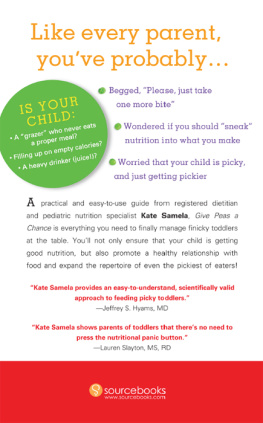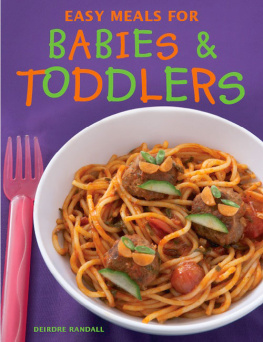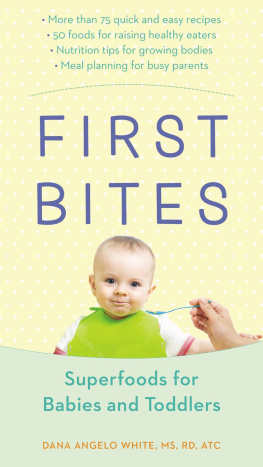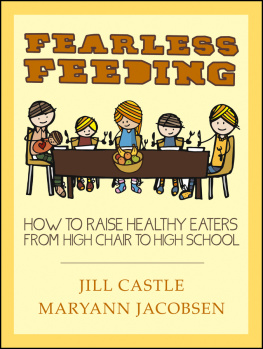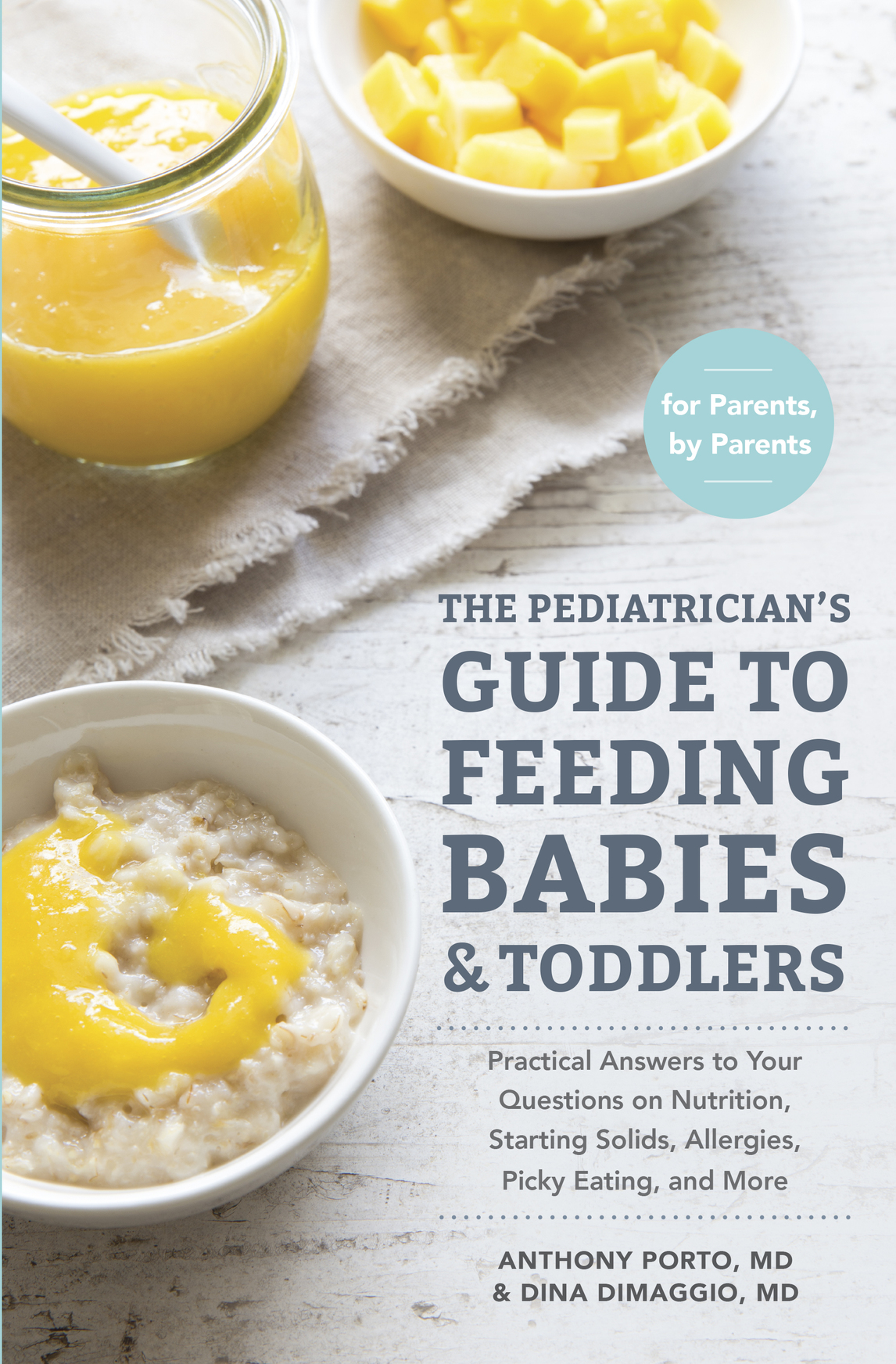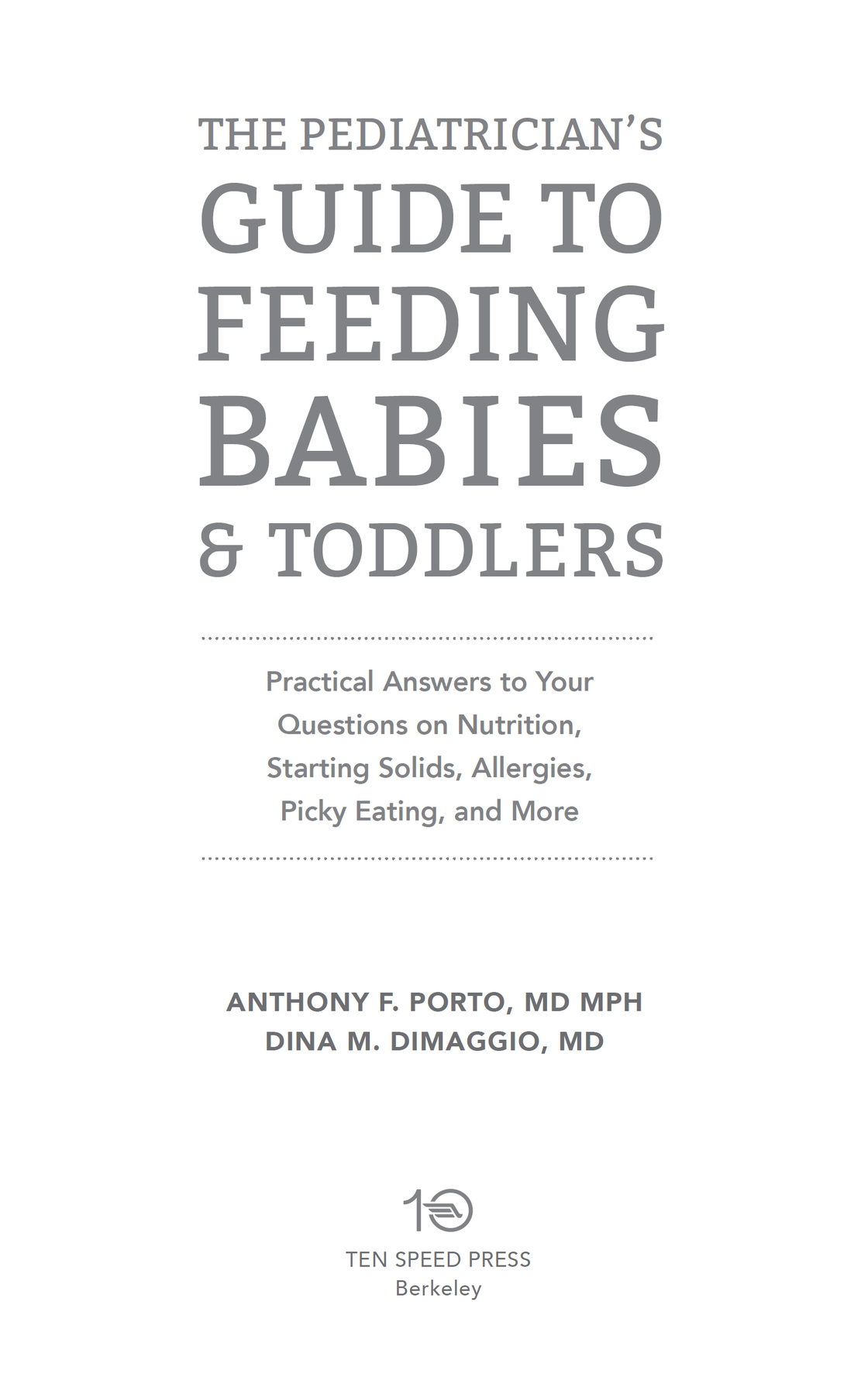We dedicate this book to our inspirations, our children, Julia, Evie, Sebby, Sid, Annie, Aaron, Sean, Andi, Jolie, Azriel, Anna, Emilia, and Caleb, and also to all the children we have been fortunate enough to take care of over the years; we cannot express enough how grateful we are to be allowed into your lives.
Introduction
The Pediatricians Guide to Feeding Babies & Toddlers combines the expertise of a group of pediatricians, a dietitian, a lactation consultant, and two chefs. More importantly, we are also parents to a total of thirteen children. Most of us met during our medical training and cultivated strong friendships during our long days and nights working together in a hospital. After completing our training over a decade ago, we felt that we were prepared to practice medicine. We couldnt imagine, however, how much our careers would be enhanced by our roles as parents. When Dinas daughters, Julia and Evelyn, were born just twenty-one months apart, Dina realized she didnt really know how a mother was feeling until she was a mother herself. As we were writing this book, Anthony was learning the ins and outs of fatherhood as he cared for his newborn son, Sebastian. Persephone was busy chasing after her twin toddler boys, Sean and Aaron. Janet bonded with her newborn daughter, Annie, and toddler son, Sid. Liza was busy helping her daughters, Emilia and Anna, with their homework and coordinating after-school activities; Susan was going on college tours with her son, Caleb; Alison developed recipes while tending to her newborn son, Azriel; and Dini cooked alongside her little girl, Andi, while taking care of her newborn daughter, Jolie. Caring for our own children helped us understand the fears, anxieties, and questions of parents on a deeper level.
Over the years, we have discussed how often parents would ask the same questions about feeding their children. We found that parents did not know where to turn for guidance and became frustrated with trying to find the right information on their own. We also know that Google-searching (yes, we all do this, often in the middle of the night!) can lead to anxiety and confusion.
We believe that feeding should be fun, stress-free, and family-oriented quality time. We created this book as a resource to provide easy access to common feeding questions from the minute an infant is born through the toddler years.
Dina, a general pediatrician, and Anthony, a pediatric gastroenterologist, who are the lead authors, assembled a team that includes a pediatric allergist, a developmental-behavioral pediatrician, a pediatric dietitian, and a lactation consultant, along with two family chefs to help answer common feeding and nutrition questions. This book was also reviewed for completeness and accuracy by an additional board-certified general pediatrician. The goal is to present the most current evidence-based information in an easy-to-read question-and-answer format. We understand the reality of parenthood and use this knowledge, along with our medical acumen, to develop practical approaches to the feeding and care of infants and toddlers. We want the best beginnings for the children we take care of, for our own children, and for your children.
How to Use This Book
We have divided the book into five age groups from the newborn period to the early toddler years. Every section contains expected developmental milestones, basic nutritional guidelines, expected growth, common medical concerns, and ends with developmentally appropriate recipes for that stage.
In chapter one, we discuss infants from birth to 3 months of life and end with healthy recipes for hungry caregivers. In chapter two, the 4 to 6 months group, we discuss the new challenge of how best to feed a baby solid foods. In chapters three and four, we discuss the 7 to 8 month and 9 to 12 month age groups, respectively. As your child increases intake of solid foods, we will address common questions such as balancing solid food and milk intake and how to transition to finger foods. In chapter five, we focus on the early toddler years, guiding parents on how to deal with picky eaters and providing healthy choices as children enter the school years. We end with chapter six, which discusses the most common medical concerns in more detail and includes additional resources.
We designed this book not only to be a reference, but also a reassuring guide through the stage that your baby is in or about to go through. You can, therefore, use this book in multiple waysby quickly finding out the answer to a current concern, by reading the section that your baby is in now or about to be in, by reading the entire book and then referring back to particular sections later as you need them, or by referencing chapter six to find out more details about a specific medical concern.
We look forward to sharing our knowledge about infant and toddler nutrition, learned from our many collective years of caring for children in the medical field, combined with our practical experiences as parents ourselves. Raising a child provides you with some of the most extraordinary times in your life, but as we know, it can also be stressful. We hope to ease this journey by providing you with information you can trust and valuable insights into the world of childhood nutrition, so you can spend less time searching for answers and more time enjoying these fleeting moments.



